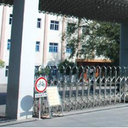Effect of Lianshu preparation on lipopolysaccharide-induced diarrhea in rats.
Mots clés
Abstrait
OBJECTIVE
To investigate the effect of Lianshu preparation on lipopolysaccharide (LPS)-induced diarrhea in rats.
METHODS
A diarrhea model was established in Sprague Dawley rats via injection of 1 mL of 30 mg/kg LPS. A total of 40 rats were randomly divided into normal group, LPS group, LPS + Lianshu group, LPS + berberine group (n = 10 in each group). Their intestinal mucosal barrier and frequency of diarrhea were observed. Levels of glucose, serum Na(+), K(+), Cl(-) and hematocrit, plasma nitrogen monoxide (NO), diamine oxidase (DAO), and D (-)-lactate were measured. The number of IgA+ plasma cells in small intestine was detected and SIgA levels in the intestinal fluid were measured. The antipyretic activity of Lianshu preparation in rats was evaluated using Brewer's yeast-induced pyrexia (10 mL/kg of 20% aqueous suspension). Acetaminophen (250 mg/kg, intragastric administration, bid) was used as a standard drug for comparison. Temperature was recorded 1 h before and 6 h after Brewer's yeast injection. Finally, small intestinal transmission in mice treated with Lianshu was detected after intraperitoneal injection of methyl prostigmin (2 mg/kg). Atropine (10 g/kg) was used as a control. The ink content in intestine was determined and the total length of intestine was measured.
RESULTS
The frequency of diarrhea was higher in LPS group than in LPS + Lianshu group and LPS + berberine group (36.70 +/- 5.23 vs 28.50 +/- 4.06 and 32.70 +/- 9.30 respectively, P < 0.01), and lower in LPS + Lianshu group than in LPS + berberine group (P = 0.03). The levels of Na(+), glucose, Cl(-), K(+) were significantly lower in LPS + Lianshu group than in LPS + berberine group (140.35 +/- 3.19 mmol/L vs 131.99 +/- 4.86 mmol/L, 8.49 +/- 1.84 mmol/L vs 6.54 +/- 2.30 mmol/L, 106.29 +/- 4.41 mmol/L vs 102.5 +/- 1.39 mmol/L, 5.08 +/- 0.66 mmol/L vs 4.32 +/- 0.62 mmol/L respectively, P < 0.05). The level of hematocrit was lower in LPS + Lianshu group than in LPS + berberine group (0.50% +/- 0.07% vs 0.59% +/- 0.10% respectively, P < 0.05). The plasma levels of NO, DAO and D (-)-lactate were higher in LPS group than in normal group (79.74 +/- 7.39 micromol/L vs 24.94 +/- 3.38 micromol/L, 2.48 +/- 0.42 micro/mL vs 0.82 +/- 0.33 micro/mL, 5.63 +/- 0.85 microg/mL vs 2.01 +/- 0.32 microg/mL respectively, P < 0.01), and lower in LPS + Lianshu group than in LPS + berberine group (48.59 +/- 4.70 micromol/L vs 51.56 +/- 8.38 micromol/L, 1.43 +/- 0.53 micromol/mL vs 1.81 +/- 0.42 micromol/mL, 4.00 +/- 0.54 microg/mL vs 4.88 +/- 0.77 microg/mL respectively, P < 0.05). The morphology of the intestinal mucosa showed destroyed villi in LPS group and atrophied intestinal mucosa in other groups. The pathological intestinal mucosal changes were less in LPS + Lianshu group than in LPS group. The number of IgA+ plasma cells and amount of SIgA were higher in LPS + Lianshu group than in LPS group (1.16 +/- 0.19/microm(2) vs 1.09 +/- 0.28/microm(2), P = 0.026; 0.59 +/- 0.12 mg/L vs 0.15 +/- 0.19 mg/L respectively, P = 0.000). Lianshu had counteractive effects on yeast-induced pyrexia and enterokinesia in rats.
CONCLUSIONS
Lianshu preparation has therapeutic effects on LPS-induced diarrhea and enterokinesia in rats.



